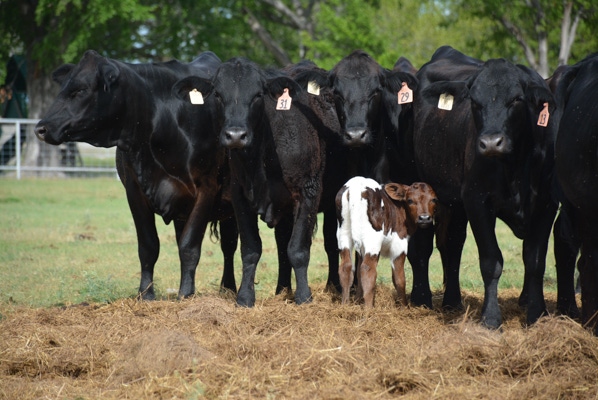August 16, 2018

Feeling the pressure from livestock producers and beef cattle support groups who rallied against TDA Commissioner Sid Miller’s ban on the use of fever tick spray boxes earlier this month, the Texas Department of Agriculture (TDA) has agreed to reauthorize the temporary use of those spray boxes by the Texas Animal Health Commission (TAHC) for 45 days while officials research whether such use violates label use of Coumaphos.
“After working with representatives from the Texas cattle industry and our state and federal partners at Texas Animal Health Commission (TAHC), USDA and EPA, we have agreed to a short term compromise that will ensure ranchers have the option of exempting some cattle from the spray boxes and move us toward a more permanent solution for providing ventilation in the boxes as required by the federally-approved Co-Ral (also known as Coumaphos) label,” Miller said in a statement late Friday.
The temporary use of the chemical in enclosed spray boxes will expire on Sept. 24 unless Texas and federal animal health officials can determine whether such use runs counter to pesticide label requirements and is safe for use on livestock in the enclosed space provided by the spray boxes.
Miller, through the TDA, claimed a lack of ventilation in the confined spray boxes is a violation of federally-approved label requirements for the insecticide. He also charged the use of Co-Ral in the spray boxes failed to meet label requirements because a licensed applicator was not present at the time of application.
USDA-APHIS officials say the spray boxes are a front-line tool used to respond to the recent northward spread of deadly Bovine Babesiosis, or Texas cattle fever, by two types of ticks known to carry the disease. Texas cattle fever decimated the cattle industry during the 19th century and has been a major concern of the industry since. Thanks to a national eradication program, which remains viable in modern times, the spread of the disease-carrying ticks has been limited to a narrow stretch of Texas located along the southern Texas-Mexico border.
But over the last six years, the ticks have moved deeper into several counties of South Texas mostly on the backs of exotic and free-roaming Nilgai antelope. In addition to a long-standing Permanent Quarantine Zone along the border, a number of temporary quarantine zones have been established as a result, prompting APHIS and TAHC to utilize the spray boxes to treat suspect animals.
The disease is a tick-borne, parasitic infection that causes significant morbidity and mortality in cattle. It is the most important arthropod-borne disease of cattle worldwide. Once contracted, it often results in cattle death. The disease was once endemic in large areas of the United States, especially in Texas.
Miller declared the use of Coumaphos in spray boxes violated label restrictions because it failed to allow for adequate ventilation. He made the decision while visiting South Texas, in what he termed “an invitation” by concerned cattlemen, who are worried about the adverse effects of the fumigant to cattle.
Following the termination of the use of the cattle boxes, USDA-APHIS and TAHC animal health officials argued cattle fever tick spray boxes have been in use for some time without reported cattle incidents involving toxicity to humans or animals.
“Portable spray boxes have been utilized for decades and have proven very effective in our containment and eradication efforts,” said Dr. Andy Schwartz, Texas State Veterinarian and TAHC Executive Director. “It is important to note, over the years of state and federal use, there has been no indication the application of Coumaphos in spray boxes has led to cattle deaths.”
One of the first cattle industry support groups to rally behind livestock producer outcry over suspension of the use of the cattle spray boxes was the Texas Southwestern Cattle Raisers Association (TSCRA). Robert McKnight, Jr., president of the association, said Miller’s decision to stop the use of the boxes is detrimental to the health of livestock subject to Babesiosis and adversely affects the livelihood of ranchers who rely on methods to fight back against the spread of the disease.
TSCRA spokesman Jeremy Fuchs said this week the language used in the warnings of the insecticide may be the culprit in the misunderstanding about the legality of its use in the spray boxes.
“The label makes it clear that the pesticide is to be used in a well-ventilated area to protect human applicators. But there are some people that believe the label instructions include the animals inside the boxes where there is a lack on ventilation, and not just the human applicators who are standing outside the boxes” he said.
In addition, Fuchs says TAHC and APHIS are working to designate TAHC qualified applicators who use the spray boxes in the field are doing so as an extension and under the authority of USDA as subcontractors on their behalf, which satisfies requirements for licensed applicators.
Since the halt on the use of spray boxes by Miller’s order, other farm groups, including the Texas Farm Bureau, rallied in support of TAHC’s use of the spray boxes in their fight against Texas cattle fever.
“We’re hopeful the agencies involved in this issue will be able to come to a compromise and satisfactory terms that will ensure the concerted fight against the spread of Babesiosis in Texas,” Fuchs added.
As of this writing, temporary quarantine zones still exist in nine Texas counties, including Cameron, Hidalgo, Kinney, Live Oak, Maverick, Starr, Webb, Willacy and Zapata counties.
You May Also Like




